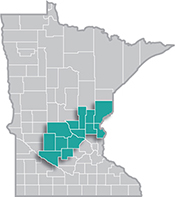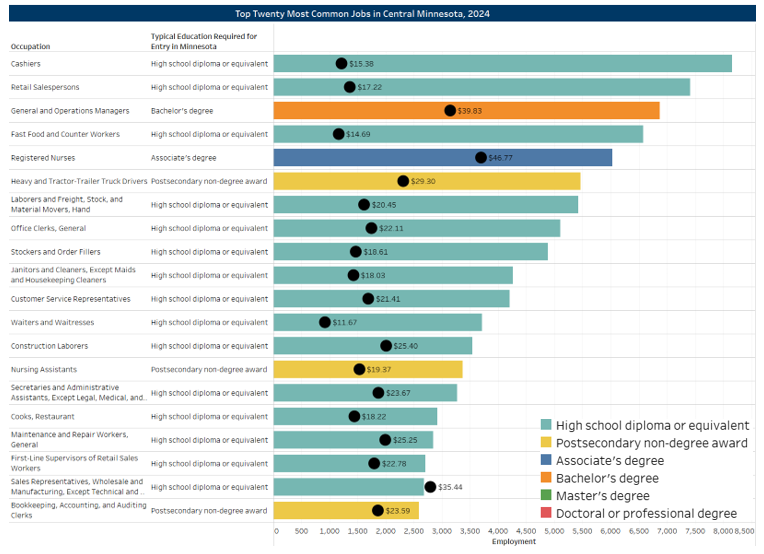 Central Minnesota is a manufacturing stronghold, with several global manufacturing firms operating there.
Central Minnesota is a manufacturing stronghold, with several global manufacturing firms operating there.
The region is especially well known for its expertise in food processing, printing, furniture manufacturing, appliances, machinery and heavy equipment manufacturing.
View our latest blogs on CareerForce. Want the freshest data delivered by email? Subscribe to our regional newsletters.
2/19/2025 2:38:32 PM
Luke Greiner and Emily Davis
Have you ever wondered what careers keep Central Minnesota thriving? From the larger cities and regional hubs to towns from Askov to Zimmerman, what people do for work is as varied as the landscapes. Understanding the most common occupations in the area provides valuable insight into the local economy, industries, and opportunities. Whether you're a job seeker, a student planning your career path, or simply curious about the details of our economy, this list of the top 20 most common occupations in Central Minnesota paints a vivid picture of where people work and how they contribute to the region's success.

At the heart of the workforce are retail and service-oriented jobs, such as cashiers (8,160 workers) and retail salespersons (7,410 workers), who collectively support local businesses and provide essential services to customers. These roles, while requiring minimal education, offer opportunities for entry-level workers and serve as a gateway to broader career growth.
A notable feature of the region's labor market is its accessibility: 16 of the 20 most common jobs require only a high school diploma or equivalent for entry. These include roles like fast food and counter workers, office clerks, stockers and order fillers, janitors, and construction laborers, providing abundant opportunities for individuals without advanced degrees. These positions can serve as stepping stones to more specialized or managerial roles, offering valuable on-the-job experience.
Healthcare remains a cornerstone of the region's economy. Registered nurses (6,030 workers) and nursing assistants (3,370 workers) play critical roles in maintaining the health and well-being of the community. Logistics also plays a vital part, with truck drivers (5,460 workers) and laborers and material movers (5,420 workers) ensuring the smooth movement of goods across the region.
Registered nurses, who earn a median wage of $46.77/hour, require at least an associate's degree, while general and operations managers, with a median wage of $39.83/hour, usually need a bachelor's degree. Meanwhile, jobs such as truck drivers ($29.30) and nursing assistants ($19.37) require postsecondary certifications, not necessarily any college experience, but offer lower wages.
Overall, Central Minnesota's workforce offers a wealth of opportunities across various occupations, with accessible entry points for workers at all education levels, making it a dynamic and thriving hub of employment.
Contact Luke Greiner at luke.greiner@state.mn.us.